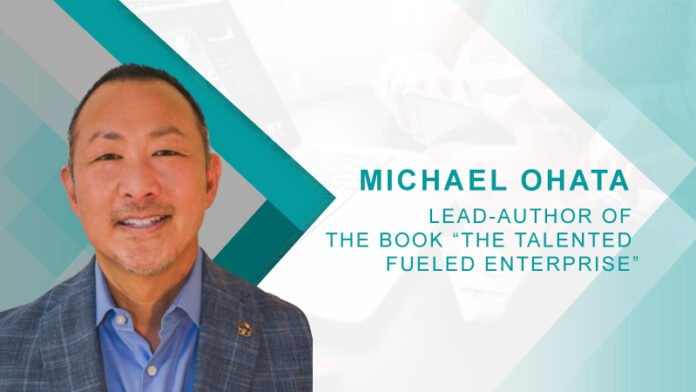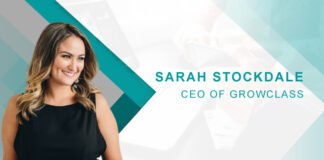Hello Michael. We are delighted to have you at HrTech Cube. Can you please tell us about your professional journey of 26 years and how it led you to write a book?
Stepping out of, back and away from an organization is a freeing process. In part, my inspiration is the employees and partners on whom we focused our learning and development efforts. On the one hand, the corporate environment appears somewhat homogenous in what we are trying to build into people, but what the generations of people in the workforce show us is that there is a diversity of what is meaningful for them AND what they want to get out of working
The book reflects a sense of this pent-up vision and desire of what could be the outcome with people – but as HR, learning and talent leaders, we operate at any given point in time in the system that holds us in place.
The other big inspiration is palpable in Millennials and even more so in Gen Z. Our work environments are headed toward a tipping point – not in the sense of a huge phase shift, but whether an organization decides to hold a narrow straight line, hacking out at the same people and talent questions, or really restart their people system in a way that understands and utilizes all employee potential.
When it comes to workforce solutions and emphasizing continuous learning and transparency, you have a very holistic approach. How did you implement these values into actionable strategies?
We are sidestepping initially here because what holistically means for one organization may mean something different for another. Organizations in regulated industries will have compliance-based learning and orientation, which are different sensibilities and sets of practices. Sometimes, the notion of holistic carries a sensibility that our efforts have to be complete and comprehensive. Our thinking and models of development should strive to achieve a holistic response. Our implementation of that strategy needs to match the organization’s operational structure. Execution will always take into account how change management works within the enterprise and how much transformation the workforce can absorb. That said, we can still challenge our organizations. This isn’t about asserting that we have aspirations; it is very much about targeting significant outcomes that have impacts on both the business and our people.
There are a few strategies I’ve implemented: role-based learning paths that include options for employees to select training, comprehensive leadership development roadmap and learning paths that have multiple entry points (to better support personalization, having employees decide what is most relevant to their learning needs – or having been discussed collaboratively with their manager), defined enterprise skills strategies across organization and by major business segment, with drill-down for specific unit needs.
The other unique opportunity I had was re-imagining and re-shaping both onboarding and milestone programs across the organization. These were grounded in culture, community and a sense of belonging because that is the context for learning. If we execute a program without these, then what we deplore is simply training.
Advocate some practices that can assist any organization to build resilience and agility in their workforce.
Following the ideas above, practices that work must also fit your organization’s values, culture and operating structure. For example, I advocate workplace mobility, allowing employees to learn new and expansive skills, try out different roles, or work on projects outside of their typical day job. Many leaders talk about mobility, but when we push in a little deeper, we realize that we often value executing against core business outcomes versus developing people. The decision is not an either-or; we can do both. That means that we value personal growth and professional development, which absolutely builds agility and resilience in the workforce.
Sometimes, we struggle with mobility because in the operating structure, we don’t have the permission structure to support this. We hold onto resources, and that points to our blind spot. We see employees as resources instead of people who want to grow. Instead of expanding skill sets, we hold people in place, taxing their resilience and burning them out. We need to recharge them through a variety of meaningful experiences that are relevant to their learning objectives. And realize this is still all in the context of getting to the broader enterprise’s business outcomes.
Another practice I fully support is coaching that scales across the organization. Typically, organizations apply executive or leadership coaching to senior roles, supporting them with the transformation needed to lead the organization, and there is a significant need to start this journey at the manager or senior manager level, developing leadership so they can better lead in their current positions as well as future roles.
What are the critical components that are important for new employees to feel valued from day one?
The critical components for new employees to feel valued and, more importantly, seen from their first days include an inclusive onboarding experience, a consistent culture, and a clear approach to workforce education. Most organizations start with benefits – compensation, medical insurance, savings plans, contributions from employers, and so forth. These are excellent, and they address basic subsistence needs: How do I live? Can I afford appropriate housing? Do I have healthcare? When we go beyond those, which we all do, employees feel valued. We want to believe that the box of swag and corporate-branded Yeti or Hydro Flask water bottle conveys value; it conveys material privilege and is undoubtedly symbolic of wanting folks to feel special.
The onboarding experience, especially if we can wrap that into a developmental program or orientation, conveys the context of the workplace: culture, community and sense of belonging. That’s when new employees get a sense if we fully see them, and by that, we will value them. Onboarding programs provide that critical opportunity, one of many, to show how we live in the organization and our culture.
Consistency in culture is a bit tougher but worth calling out. In contemporary corporate environments, we tend to declare culture and call out what we stand for, our values, and who we want to be known for. Culture is lived and experienced, and all of our efforts have to be around identifying and nurturing the good stuff and rooting out those bad behaviors, actions, and processes that create dissonance, for example, toxic leadership. We vow to address it; somehow, it always takes a long time to rid ourselves of it while we agonize and rationalize. All the while, employees see what’s going on.
Lastly, the value employees will experience will come through an approach to workforce education, the balance of both professional development and personal growth, that we have a commitment to growth, not only of the business but also with the people who fuel the enterprise.
How would you guide an organization to design talent programs that are not only skill centric but also inclusive?
Talent programs should focus on skills and also attributes, those core human characteristics that help the workforce to apply learned skills in new situations. Characteristics also help to make employees adaptable and resilient and support their portability. Developmental programs achieve inclusiveness when they support all employees. If we make only differentiated investments with the workforce, for example, focusing only on high-potentials, we exclude a lot of amazing talent who may not have had access or considerations of equitable support in enabling high performance across the organization. Most leaders tighten their shoulder blades when hearing this, feeling this isn’t scalable or feasible. The first step comes with a decision on how we look at the workforce and a deeper understanding of how development works.
A lot of the time, talent programs work with high-potential or high-performance individuals perceived as having high potential. The golden aura surrounds them, but leadership programs for these cohorts sometimes focus on baselining role expectations or, in the worst case, remediating a leader’s deficiency through coaching. With respect to inclusiveness, leadership programs for select cohorts provide access to networking and visibility with leadership that others do not have access to. In this sense, the golden aura perpetuates a kind of self-fulfilling development of a few over the broader talent of the organization.
I understand that some investments should be made. And we definitely need to make more investments in developing talent across the organization. If for nothing else, this will strengthen the organization’s capabilities, leading to better performance.
When it comes to aligning talent strategies with rapidly changing business goals, what challenges do organizations face, and how can they overcome these challenges?
A reality for any enterprise is disruption, especially that experienced through technological changes such as automation and AI. Another predictable part of the business environment is ever-evolving business goals to address those changes; markets and customer requirements shift, such as the evolution of pure product to user experience and customer experience. Organizations can ready themselves if not fully overcome the challenge of changing business goals with two commitments. The first commitment is having a clear perspective and framework for how the organization develops adaptive leadership, defining a leadership approach and developing leaders who know how to work through transformation. When the business environment is not fully predictable, and we work through a business response for the first time, we need leaders who can guide and manage the organization through debate, unknowns, and challenging age-old assumptions and practices of how work gets done.
We also need to commit to a practice of workforce education that develops the adaptability and learnability required by all in the organization to manage disruption and change. We’ve been talking about technological disruption for decades, and there really should be no reason why agility in the workforce is not part of our talent strategy. This talent framework and approach draw upon developing attributes and stems from principles of inclusion and everyone is a leader.
What metrics are considered important to measure the effectiveness of their talent programs, especially in terms of employee engagement and retention?
Organizations use employee engagement surveys to test their hypotheses on and measure how well talent initiatives address engagement. Metrics related to this, as it pertains to talent programs, have to do with questions regarding access to learning, having time to learn, and potentially if the team environment fosters development and learning. Because these surveys are expansive and many stakeholders have an interest in testing their own hypotheses, we might have a harder time drilling deeper to gain insight. The retention questions, such as “I think about looking for another job,” are done in isolation, so the correlation, let alone causality, is supposed. Potentially, we could ask questions about other specific tools or approaches to development, such as access to coaching, the strength of mentors and a mentoring mindset, or the vitality of a team environment that supports coaching for performance and development.
In your experience, what strategic shifts are essential for companies looking to thrive in a talent-driven market, and how can they stay ahead of the competition?
The most profound strategic shift will be in the hearts and worldview of the enterprise and its leadership that recognizes that by “talent-driven market,” we mean all talent, not such the hyped-up nervousness that fixates on shortages of specific skills and unicorn players that we compete for. The latter sentiment comes from a place of scarcity and has been in our thinking for some 23 years or more. The mindset may have made sense in the context of fixed or limited talent investments and an implicit underpinning of a financial model that forced a distribution curve to allocate fixed awards. What needs to shift is the notion of performance being driven only by individuals when all of our talent development research and theory recognize the role of the team as the key unit in the organization that drives performance as well as learning.
The strategic shift includes looking at the entire workforce and understanding the organizations’ AND individual’s capabilities. That skills live not in just a few but in teams, and that individuals will have varied skill sets. And that all employees need professional development and personal growth opportunities.
Can you tell us more about your book ‘The Talented Fueled Enterprise’?
The Talent-Fueled Enterprise is a leader’s manual showing how we can fuel the enterprise with talent and build tomorrow’s workforce. Like a guidebook, it is informed by research and experience leading and navigating organizations as well as supporting clients. Discovering what we might have overlooked or forgotten is tangibly within our reach and command. The book is a work of speaking the truth out loud about the opportunities for the organization, for the workforce and the people who are the hearts and soul of the enterprise. The day job constrains us at times, tailoring what we could do to what we must get done given the business results we need tomorrow. There is a clear conviction that the talent-driven market is forcing us to rethink, reimagine and change our approach to talent across the entire enterprise.
What advice would you give to HR leaders that are striving to build a high-performance, inclusive work culture that also prioritizes employee growth?
Potential is such a powerful word and one we believe is not always present in our organizations. This is ironic because we all set out to hire the best. Our workforce has vast potential if we commit to unlocking it and developing it. All leaders argue that they look at talent strategically. I’m challenging us to strategically participate in creating and raising talent. When we look at talent strategically, we often make thoughtful bets on senior leaders or high-potential employees, investing pragmatically and prudently. When we participate directly in developing talent throughout the enterprise, we have a well-placed wager on building tomorrow’s full workforce. Growing talent takes time, but it does not mean that we have to sacrifice speed or tamp down urgency. We know the tactics to get the skills we need immediately. We can hire it; we can immerse employees in rapid skilling or certification programs, and so forth. Skills in the near term may solve resource challenges, but they won’t solve talent resilience and durability.

Michael Ohata Lead-Author of the book "The Talented Fueled Enterprise
Mike Ohata brings a career-long history of transforming Big Four and Fortune 15 organizations through talent frameworks, comprehensive people development, and workforce solutions. During his 26-year executive career, he strategically navigated Microsoft Corporation and KPMG through disruption and challenges, building the operational pillars needed to scale national and international markets. His thought leadership has enhanced the growth, diversity, and capabilities of workforces of up to 200K. In 2023, he was honored with the LearningElite Gold Award for pioneering exemplary learning and development strategies at KPMG. Outside his corporate roles, Mike is committed to community service. He serves as Vice Chair of Thrive Counseling Center and Founding Advisory Board Member of EZRA, a virtual coaching and learning provider. He is also an Advisor to startups such as BigSpring and Modal. Mike holds a Master of Education from Columbia University, a Master of Arts in Linguistics and a Bachelor of Arts in Anthropology from the University of Hawaii. His new book, The Talent-Fueled Enterprise - A Powerful Approach to Build Tomorrow’s Workforce, released in June 2024, offers insights for business leaders on building resilient and durable workforces.












